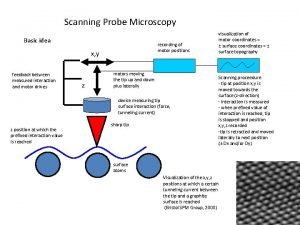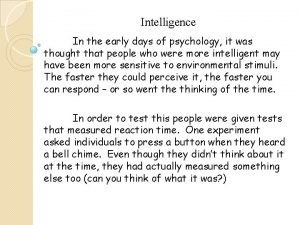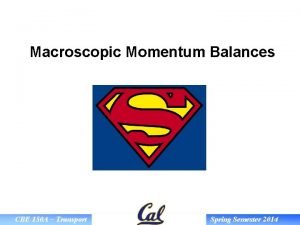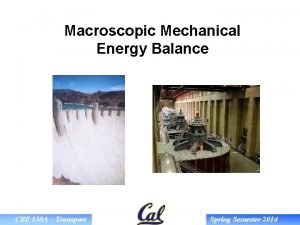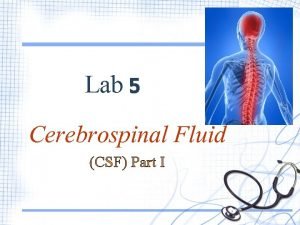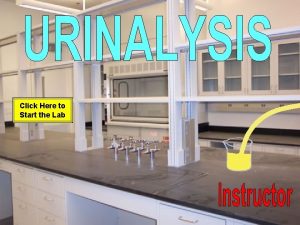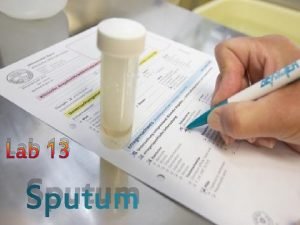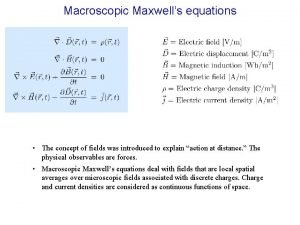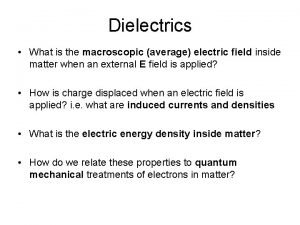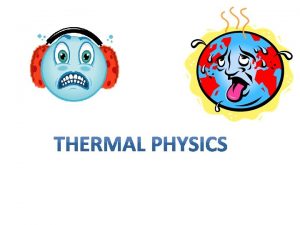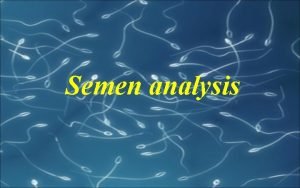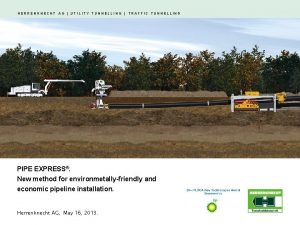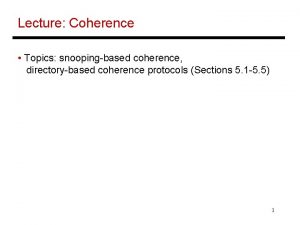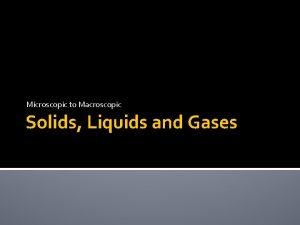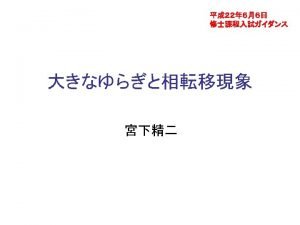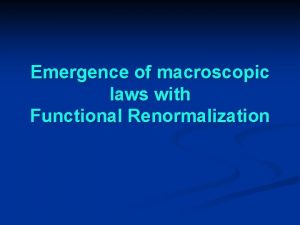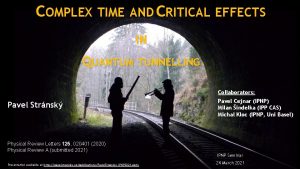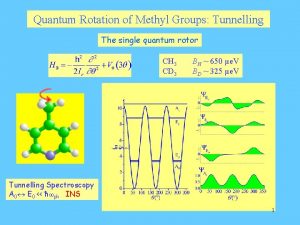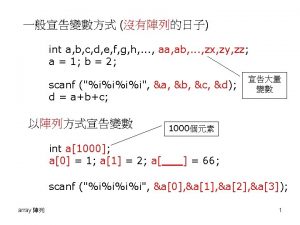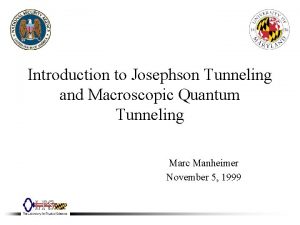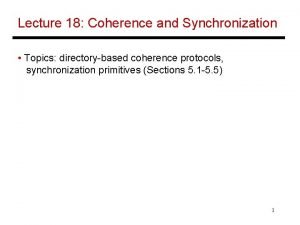MACROSCOPIC QUANTUM TUNNELLING AND COHERENCE THE EARLY DAYS














- Slides: 14

MACROSCOPIC QUANTUM TUNNELLING AND COHERENCE: THE EARLY DAYS A. J. Leggett Department of Physics University of Illinois at Urbana Champaign Quantum Superconducting Circuits and Beyond A symposium on the occasion of Michel Devoret’s 60 th birthday New Haven, CT 13 December 2013 Support: John D. and Catherine T. Mac. Arthur Foundation

MRD- Some 60’s pre-history: Is there a quantum measurement problem? “In our opinion, our theory [of the measurement process] constitutes an indispensable completion and a natural crowning of the basic structure of present-day quantum mechanics. We are firmly convinced that further progress in this field of research will consist essentially in refinements of our approach. ” (Daneri et al. , 1966) “The current interest in [questions concerning the quantum measurement problem] is small. The typical physicist feels that they have long been answered and that he will fully understand just how if ever he can spare twenty minutes to think about it. ” (Bell and Nauenberg, 1966) “Is “decoherence” the answer? ” (Ludwig, Feyerabend, Jauch, Daneri et al…) NO! Then, can we get any experimental input to the problem? i. e. Can we build Schrödinger’s cat in the lab?

MRD- Some early reactions: 1) Unnecessary, because “we already knew that QM works on the macroscopic scale” (superfluid He, superconductivity, lasers) 2) Ridiculous, because “decoherence will always prevent macroscopic superpositions” (“electron-on. Sirius” argument) What kind of system could constitute a “Schrödinger’s cat”? 1) Must have macroscopically distinct states, with transitions between them mediated by intrinsically QM processes 2) For QM processes to be non-negligible, need relevant values of S (classical action) to be not too large in units of ħ 3) To avoid decoherence, coupling to “environment” should be small 4) To avoid decoherence, intrinsic dissipation should be small

MRD- Promising candidate: Josephson devices 1) At least in rf SQUID ring (“flux qubit”) states of opposite circulating current (may be) “macroscopically distinct” 2) Back-of-envelope estimates with attainably small capacitance, S/ħ <~ 20 3) Techniques for shielding and isolation well devloped in context of metrology 4) Most obvious source of intrinsic dissipation, normal electrons, vanishes exponentially at low T: for 1 cm 2 block of Nb at T = 50 m. K, nn~10 -100! number (not fraction!) of normal electrons

MRD- Two principal experimental setups: A. Current-biased Josephson junction Thermal activation R ~ [ X ] E H c ● ωr “macroscopic quantum tunnelling” (MQT) quantum tunnelling ϕ (phase) B. Rf SQUID ring (“flux qubit”) X external flux E ● Incohenerent or coherent tunnelling “macroscopic quantum coherence” (MQC)

MRD- Ivanchenko and Zilberman (1968): back-of-envelope estimate of onset of MQT when k. BT ~ ħωρ. Fulton and Dunkleberger (1974): experiments on Kramers activated escape of JJ from zero-voltage state down to k. BT ~ 4ħωρ, no evidence for MQT De Bruyn Ouboter (1980): observation of incoherent tunnelling of rf SQUID between flux states Clark et al. , (1980): claim evidence for MQC-type behavior in rf SQUID.

MRD- The $64 K question, c. 1980: What does damping/decoherence do to the “naïve” predictions? ((classical) damping (quantum) decoherence) The simplest case (MQT with “ohmic” damping): ● ωo vo qo If classical equation of motion is quantum tunnelling Then (plausibly!) escape rate by QT is

MRD- But: what if classical equation of notion is Friction coefficient Must find a way to treat dissipative term in language of QM Solution (Feynman & Vernon, Ullersma. . . ): model environment by bath of harmonic oscillators (Why does this work? – cf. 19 th century atomic physics!) How to combine this with WKB technique? Solution: use instanton method (Stone, Callan & Coleman … ) But must include “counterterm” to offset reactive effects of coupling (suppression of barrier height)

MRD- Final result for escape rate by QT in presence of ohmic dissipation: (A, α calculable as f(η)) Why does (ohmic) dissipation suppress QT rate but not classical (Arrhenius – Kramers) rate? Effect of coupling to oscillator bath: Vo Vo {x} q ● qo Saddlepoint Path length

MRD-

MRD- Some quantitative tests of QM of macrovariable (RSJ) Devoret et al. (1984): resonant activation (Þ quantized energy levels) Martinis et al. (1985): MQT with light dissipation (no fitting parameters) Cleland et al. ; (1987) Suppression of MQT by dissipation Simple WKB With no fitted parameters, agreement with theory incorporating dissipation within factor ~2 Factor of 300 Prediction with dissipation T 2/3 Urbina et al. (1989) “latency” of tunnelling: L X X Transmission line Absorbing plug

MRD- So: everything seems consistent with QM working for macrovariable at level of Josephson devices. But can we exclude alternative views? (cf. EPR-Bell). For this, need MQC: AJL & Garg (1985): temporal correlations in (eg) flux qubit predicted by macrorealism violate predictions of any macrorealistic theory (“temporal Bell inequalities”)

MRD- Where Do We Stand To-Day? X flux qubit different in behavior of 105 -109 electrons Many experiments. (e. g. Ramsey-fringe) consistent with QM predictions including effects of dissipation (e. g. Chiorescu et al. 2003, Plantenberg et al. 2007) But: to date no real analog of Freedman – Clauser – Aspect experiment in EPR-Bell case, ie. Alternative theories of the macroworld not definitively excluded (Palacios – Laloy et al. 2010: transmon, weakmeasurement technique)

MRD- X X “not macro- or even mesoscopic” total number of electrons in penetration depth mean velocity of circulating electrons However: if we compare stationary and moving states of smallest visible dust particle, WDP ~ 1, 500 ! So: are we already at the level of “everyday life”? Happy birthday, Michel!
 Tunnelling
Tunnelling Classical physics
Classical physics Quantum physics vs mechanics
Quantum physics vs mechanics Intelligence in the early days
Intelligence in the early days Early cpr and early defibrillation can: *
Early cpr and early defibrillation can: * Macroscopic momentum balance
Macroscopic momentum balance Macroscopic mechanical energy
Macroscopic mechanical energy Csf correction for rbc
Csf correction for rbc Chemstix analysis
Chemstix analysis Macroscopic hematuria causes
Macroscopic hematuria causes Macroscopic cheesy masses in sputum
Macroscopic cheesy masses in sputum Maxwell
Maxwell Dielectrics
Dielectrics Macroscopic level meaning
Macroscopic level meaning Slidetodoc.com
Slidetodoc.com
